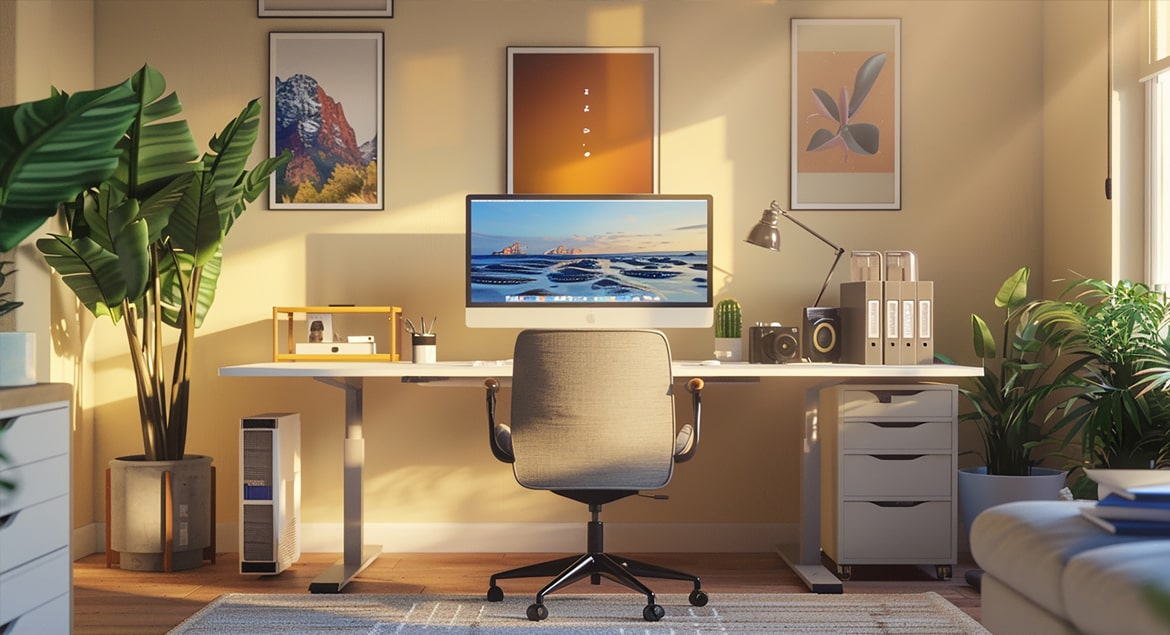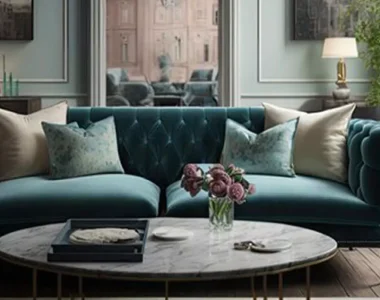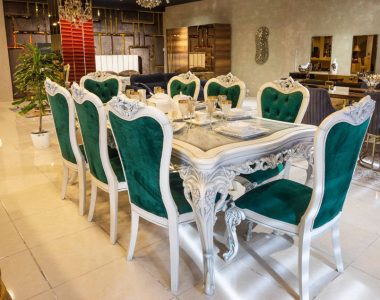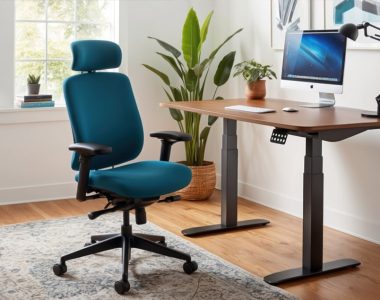Furniture and Design Tips
As the trend of remote work continues to grow, the need for a functional and stylish home office has never been more essential. Designing an office at home is not just about setting up a desk and chair; it involves carefully selecting the right furniture and incorporating design elements that promote productivity, comfort, and creativity. Whether you’re working from home full-time or just need a space for occasional work, creating an efficient home office setup can have a significant impact on your workflow and well-being.
This guide will explore essential furniture and design tips to help you create the ultimate home office setup.
1. Choosing the Right Desk
The desk is the centerpiece of any home office, and selecting the right one is crucial for both functionality and aesthetics. There are a variety of factors to consider when choosing a desk, including:
- Size and Space: Depending on the available space in your home office, you’ll want to choose a desk that fits comfortably. A large desk may be ideal if you need space for multiple monitors, documents, or gadgets, but a compact desk might be a better fit for smaller rooms.
- Style: Desks come in various styles, from minimalist designs to vintage wooden desks. Your choice should reflect the overall aesthetic of your home and personal preferences.
- Storage: For those who need to keep documents, gadgets, or office supplies close by, opting for a desk with built-in storage such as drawers or shelves can be a practical solution.
Popular desk options for home offices include standing desks, which allow you to alternate between sitting and standing for better posture and circulation, or corner desks that maximize the use of space in smaller rooms.
2. Ergonomic Chair: Prioritizing Comfort
Your chair is just as important as your desk when it comes to creating an efficient home office setup. Since you’ll likely spend hours seated, investing in an ergonomic office chair is essential for maintaining good posture and preventing back or neck pain.
- Adjustability: Look for a chair that is adjustable in height, backrest tilt, and armrests. This will ensure that the chair supports your body comfortably, no matter your sitting position.
- Lumbar Support: A chair with built-in lumbar support helps to maintain the natural curve of your spine, reducing strain on your lower back.
- Material: Choose a chair made from breathable materials, such as mesh, to keep you cool and comfortable throughout the day.
An ergonomic chair not only enhances comfort but also promotes a healthy work environment by reducing fatigue and the risk of long-term health issues.
3. Proper Lighting: Enhancing Productivity
Lighting plays a significant role in setting the mood and functionality of your home office. Proper lighting can reduce eye strain, boost productivity, and even enhance the overall aesthetic of the space.
- Natural Light: Position your desk near a window to make the most of natural light. Sunlight improves mood and energy levels, making it an ideal light source for work.
- Task Lighting: A desk lamp with adjustable brightness is essential for focused tasks. Choose one that provides direct, concentrated light for reading or detailed work.
- Ambient Lighting: Soft ambient lighting helps to create a comfortable atmosphere. This can be achieved with floor lamps, wall sconces, or overhead lighting that complements the natural light.
The combination of natural and artificial lighting can create a well-lit workspace that prevents eye strain and keeps you motivated throughout the day.
4. Storage Solutions: Keeping Your Space Organized
Clutter can be distracting and impede productivity, which is why it’s important to include sufficient storage options in your home office design. Whether you have a large or small space, there are plenty of storage solutions that can help keep your office organized and efficient.
- Shelving Units: Wall-mounted shelves are a great way to save floor space while providing ample storage for books, documents, and office supplies.
- Filing Cabinets: For those who deal with a lot of paperwork, filing cabinets or mobile storage carts are essential for keeping important documents organized and easily accessible.
- Drawers and Bins: Utilize desk drawers, storage bins, or baskets to keep smaller items like stationery, cables, or electronics neatly tucked away.
An organized home office minimizes distractions and helps create a more productive and visually appealing environment.
5. Incorporating Personal Touches
While functionality is key, your home office should also reflect your personality. Personalizing your workspace can create a more inspiring and comfortable environment, leading to improved focus and creativity.
- Wall Art and Décor: Hang art pieces, motivational quotes, or photos of loved ones on the walls to bring character and warmth to your space.
- Plants: Adding greenery can enhance the air quality in your home office and create a calming atmosphere. Choose low-maintenance plants like succulents, snake plants, or pothos that thrive indoors.
- Color Scheme: The colors you choose for your home office can have an impact on your mood and productivity. Neutral tones like white, beige, or gray promote focus, while accents of blue or green can bring a sense of calm and tranquility.
By incorporating personal elements, you can create a space that feels inviting and truly your own, making it easier to spend time working there.
6. Tech and Accessories: Streamlining Workflow
No home office is complete without the right technology and accessories to ensure an efficient and productive workflow. Depending on your work requirements, you might need more than just a computer to enhance your workspace.
- Monitors: If you work with multiple windows or programs, consider investing in a second monitor or an ultra-wide screen. This will increase your productivity by allowing you to multitask more efficiently.
- Cable Management: Keeping cables organized is essential for maintaining a clean and clutter-free workspace. Use cable organizers or clips to prevent cords from tangling and to keep your desk looking tidy.
- Ergonomic Keyboard and Mouse: For added comfort, consider investing in an ergonomic keyboard and mouse that reduce strain on your wrists and hands.
- Noise-Canceling Headphones: If you need to block out distractions while working from home, noise-canceling headphones can help you stay focused.
Ensuring that your workspace is equipped with the right tools and technology will enhance your productivity and create a seamless work experience.
7. Creating a Multi-Functional Space
In many homes, the office space is shared with other functions, such as a guest room or a small living area. If you’re working with limited space, consider creating a multi-functional home office that serves both your work needs and other purposes.
- Murphy Desk: A foldable Murphy desk is an excellent solution for those who need to conserve space. It can be folded up when not in use, leaving more room for other activities.
- Convertible Furniture: Option for furniture that can serve multiple purposes, such as a daybed that doubles as seating during the day and a guest bed at night.
- Room Dividers: If your home office is in a shared space, using a room divider can create a sense of privacy and separation, making it easier to focus on work.
Designing a multi-functional space allows you to get the most out of your home while maintaining a productive work environment.
Conclusion
Creating the ultimate home office setup requires a thoughtful balance between functionality, comfort, and style. By carefully selecting the right furniture, optimizing your lighting and storage, and incorporating personal touches, you can design a workspace that not only boosts your productivity but also feels like a reflection of your personality and lifestyle. Whether you have a dedicated office room or a shared multi-functional space, these furniture and design tips will help you build an inspiring and efficient home office.




